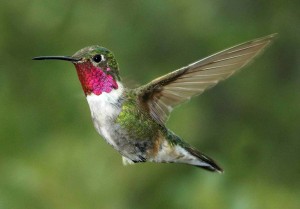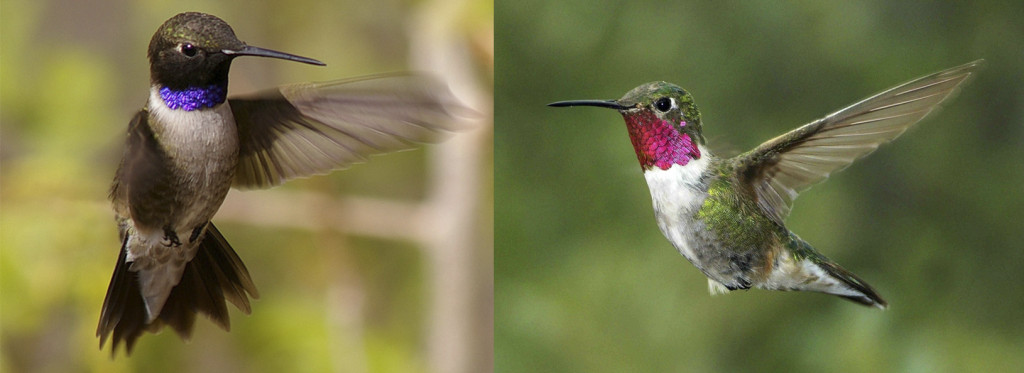By Dan Potts | Salt Lake County Fish & Game Association
Jordan River Commission Technical Advisory Committee

![BlackChinnedHummingbirdMF4[1]](https://jordanrivercommission.com/wp-content/uploads/BlackChinnedHummingbirdMF41-300x228.jpg)
There are about 750 different kinds of hummingbirds, and all of them are only found here in the Americas! Here in the Salt Lake Valley we are only visited by two species, the broad-tailed and the black-chinned. The broad-tails migrate south in the fall as far as Guatemala, and black-chinned as far as Mexico.
The broad-tailed hummer is the larger of the two at four inches long. The adult males have brilliant bronzy-green crowns, backs and sides, with a hot, rose-pink throat patch (gorget), mostly white below that, and a long, broad, rounded black tail. Females look mostly the same except that the gorget is white with dots, pale orange below, and similar tail, but with bright white corners. Males beat their wings to create a loud “whirr” or whistle, sometimes accompanied by a harsh trilling call. The female’s call is a short series of soft “chips”. Both fan their broad tails as they hover to feed.
The black-chinned hummer is smaller at only three and half inches. Males are also metallic green above and sides, but the gorget is black above and iridescent violet below, white mid-belly stripe, and a relatively smaller tail with pointy feathers. Females are, again, similar to the males except for the all-white under parts, and green tail with bright white corners similar to female broad-tails. Males can be very aggressive for their size, and often chase off all other hummers in their territory with very loud “buzzing” wing beats, often associated with a loud “teeuw” or “tchew” call, that escalates to high squeals when chasing off other hummers. Males often duel with each other by flying high to then dive straight down together towards the ground at high speeds, only to “pullout” at the last moment, in a perilous game of chicken. The wing noise they make in these dives is very impressive, indeed. It is not uncommon for locals to mistake the females and younger “hummers” of either species for a different one because they can all look so different.
Most hummers beat their wings so fast that the wings almost become invisible, allowing them to hover in mid air especially while feeding. Both species can be extremely aggressive for their small size, and willing to attack larger animals, especially when defending their tiny nests. Those tiny, little, woven, cup-like nests can be found atop of tree branches and twigs, and can only hold two white, pea-sized eggs, which hatch into chicks more reminiscent of insects than birds.
After the chicks leave the nest and are able to fly, they spend most of the day feeding on higher protein insects like mosquitos and midges which they artfully pick out the air with their relatively long bills. Later in life they use these long bills to reach nectar deep in flowers like trumpet vines for their high energy needs. Many of us put out red hummingbird feeders full of sugar solutions to attract these extremely entertaining little birds. Placing feeders in the shade where they are more easily spotted often attracts both sexes of both species, where they all try to claim and defend it against all others. I can sit for a long time watching these little rascals.
How about you?


